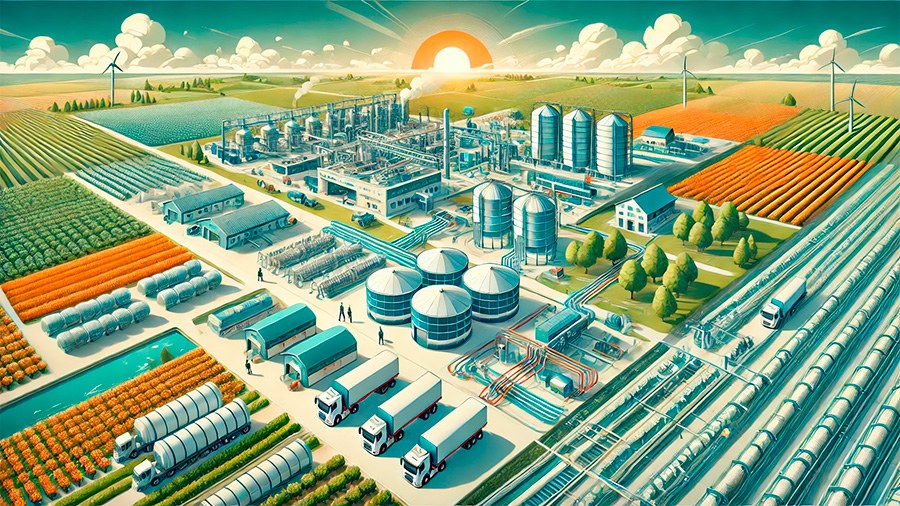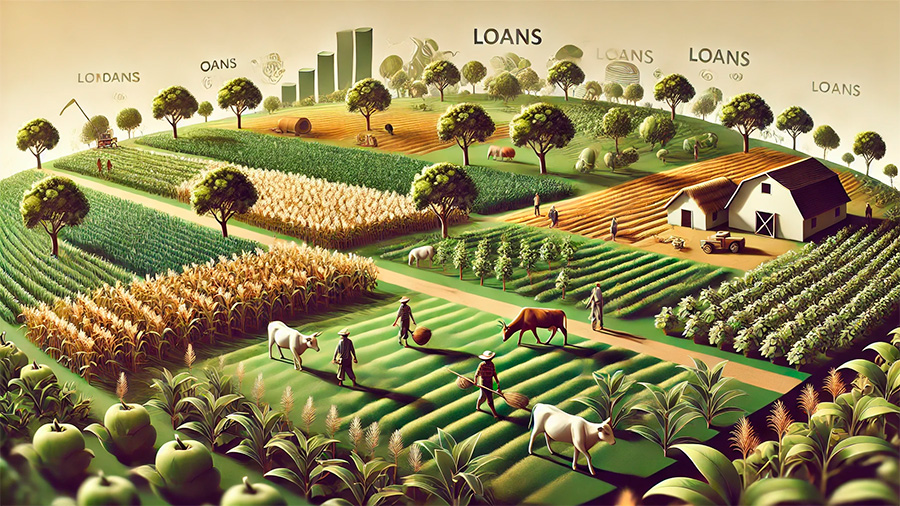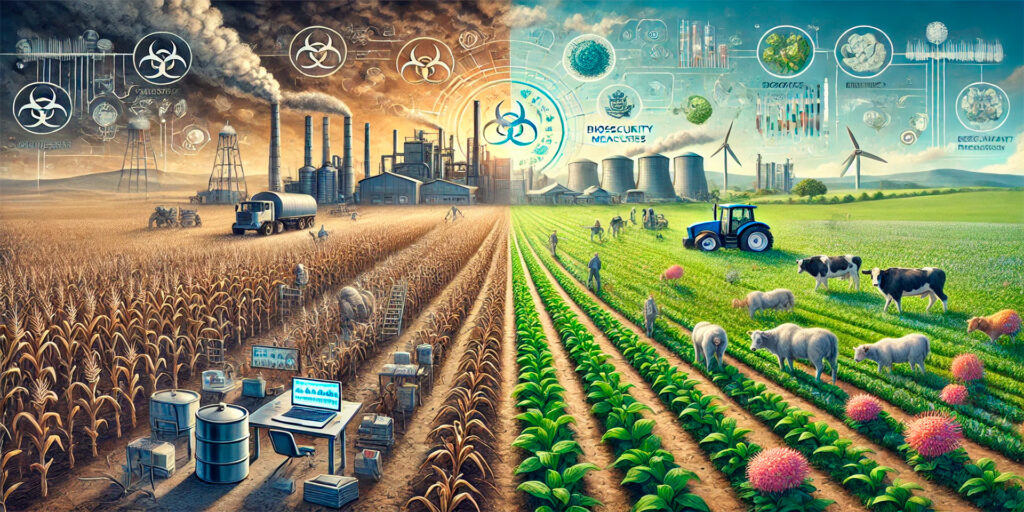Lending plays a crucial role in empowering farmers to combat infections in the agricultural sector. Diseases in crops and livestock can devastate productivity, lead to financial losses, and threaten food security. Targeted lending programs provide farmers with access to modern equipment, advanced technology, and improved infrastructure, all of which are essential for managing and mitigating the impact of infections.
This article explores how lending programs support farmers in the fight against infections by offering financial assistance for acquiring better equipment, implementing biosecurity measures, and investing in disease-resistant crops and livestock.
The Importance of Lending in Agriculture
Agricultural businesses face many challenges, including the risk of infections that can spread rapidly through crops and livestock, leading to devastating financial losses. Farmers often lack the financial resources to invest in preventive measures, advanced technology, and infrastructure that can help mitigate the risks of infections. Lending programs provide essential financial support, allowing farmers to access the tools they need to protect their crops and livestock.
1. Access to Modern Equipment and Technology
Modern equipment and technology are key components in the fight against agricultural infections. Lending programs that provide access to affordable loans enable farmers to purchase essential equipment such as precision irrigation systems, automated livestock monitoring devices, and advanced pesticide application systems. These technologies help farmers detect infections early, manage them effectively, and prevent further spread.
How modern equipment aids in infection control:
- Early detection: Advanced technology allows farmers to monitor crop health and detect infections at an early stage, reducing the risk of widespread outbreaks.
- Efficient management: Automated systems help apply treatments accurately, minimizing the spread of disease and optimizing resource use.
2. Biosecurity Measures for Livestock
In the livestock sector, infections can spread rapidly, causing significant losses for farmers. Targeted lending programs can help fund the implementation of biosecurity measures such as quarantine facilities, disinfection equipment, and improved animal housing. These investments reduce the risk of disease transmission and help farmers manage infections more effectively, safeguarding both animal health and farm profitability.
Impact of biosecurity investments:
- Quarantine facilities: Proper quarantine spaces prevent infected animals from spreading disease to healthy livestock, protecting the entire herd or flock.
- Disinfection equipment: Ensuring that farms are equipped with effective sanitation tools helps eliminate pathogens and reduce the likelihood of outbreaks.

Lending Programs for Infrastructure Improvements
Modern infrastructure is essential for preventing and managing infections in agriculture. Lending programs that support investments in better storage, transportation, and irrigation systems help farmers create a more resilient and hygienic farming environment. These improvements reduce the likelihood of infections and help maintain product quality, which is crucial for meeting market demands and ensuring farm profitability.
1. Improved Storage and Transportation
Poor storage conditions can contribute to the spread of infections in both crops and livestock. Lending programs that provide financing for improved storage facilities help farmers prevent contamination and spoilage. In addition, better transportation infrastructure ensures that agricultural products are delivered to markets in a timely and safe manner, reducing the risk of infections spreading during transit.
Benefits of infrastructure improvements:
- Safe storage: Modern storage facilities reduce the risk of contamination and ensure that agricultural products remain free from infection.
- Efficient transportation: Improved transportation systems reduce delays and help prevent infections from spreading during the delivery process.
2. Advanced Irrigation Systems
Infections in crops are often exacerbated by poor water management. Lending programs that provide financing for advanced irrigation systems help farmers control water use more effectively, reducing the spread of waterborne diseases. Drip irrigation and other precision watering methods ensure that crops receive the right amount of water without creating conditions that promote the growth of harmful pathogens.
How irrigation systems help prevent infections:
- Targeted watering: Advanced irrigation systems deliver water directly to the roots of plants, minimizing excess moisture that can lead to fungal infections.
- Water conservation: Efficient irrigation reduces the overall water usage, preventing waterlogged fields where infections can thrive.

Investing in Disease-Resistant Crops and Livestock
Lending programs also help farmers invest in disease-resistant crops and livestock, which are crucial for long-term infection management. By providing access to affordable loans, farmers can purchase seeds, plants, and animals that are bred to resist common infections, reducing the need for chemical treatments and improving overall farm sustainability.
1. Disease-Resistant Crop Varieties
Developing and growing disease-resistant crops is one of the most effective ways to manage infections in agriculture. Lending programs that support the purchase of high-quality seeds allow farmers to grow crops that are less susceptible to infections, improving yields and reducing the need for chemical pesticides.
Benefits of disease-resistant crops:
- Reduced chemical use: Crops that are resistant to common infections require fewer chemical treatments, lowering production costs and environmental impact.
- Higher yields: Healthier crops lead to increased productivity, providing farmers with better financial returns and greater food security.
2. Disease-Resistant Livestock Breeds
Similar to crops, breeding livestock with inherent resistance to infections helps farmers manage disease outbreaks more effectively. Lending programs that enable farmers to invest in disease-resistant livestock breeds improve the overall health of the herd and reduce the need for costly veterinary treatments.
How disease-resistant livestock improve farm productivity:
- Healthier herds: Disease-resistant livestock are less likely to contract infections, reducing the need for antibiotics and improving animal welfare.
- Lower veterinary costs: By investing in livestock that are resistant to disease, farmers can reduce the costs associated with treating infections.
The Long-Term Benefits of Targeted Lending Programs
Lending programs that focus on helping farmers manage infections provide long-term benefits for both the agricultural sector and the broader economy. By improving farm productivity, reducing infection risks, and supporting sustainable practices, these programs contribute to the overall resilience of the agricultural industry.
1. Enhanced Farm Sustainability
By investing in modern equipment, biosecurity measures, and disease-resistant crops and livestock, farmers can create more sustainable operations. Lending programs that support these investments not only help farmers manage infections in the short term but also improve the long-term viability of their farms, ensuring continued productivity and profitability.
Key factors in farm sustainability:
- Reduced environmental impact: Sustainable farming practices, supported by lending programs, help minimize the use of chemicals and conserve natural resources.
- Improved resilience: Farms that are equipped to manage infections are better able to withstand environmental challenges and maintain consistent production.
2. Strengthening Food Security
When farmers have access to the resources they need to manage infections, they can produce healthier, higher-quality crops and livestock. This contributes to food security by ensuring a stable supply of food products for local and global markets. Lending programs that support infection control help strengthen the entire agricultural supply chain, providing benefits for consumers, businesses, and economies.
How lending programs support food security:
- Increased productivity: Farms that are protected against infections can produce more food, helping to meet the growing global demand for agricultural products.
- Stable food supply: By reducing the risk of disease outbreaks, lending programs help ensure a consistent supply of healthy, safe food products.
Conclusion
Targeted lending programs play a vital role in helping farmers manage and mitigate infections in the agricultural sector. By providing access to modern equipment, biosecurity measures, advanced infrastructure, and disease-resistant crops and livestock, these programs enable farmers to protect their operations and ensure long-term sustainability. As infections continue to pose a threat to agricultural productivity, the support offered by lending programs will remain crucial in safeguarding the future of farming and food security.



